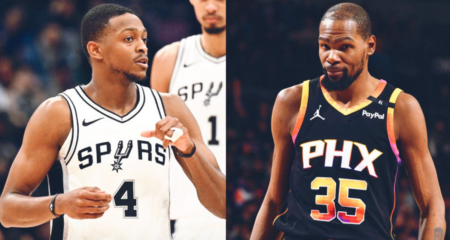 Nitin Bassi, Ekansha Khanduja: India announced its “Water Vision” as a part of the prime minister’s “Vision India @ 2047” plan. This comes at a momentous time — the recent 2023 Synthesis Report finalised by the IPCC for the Sixth Assessment Report confirms the adverse impacts of human-caused climate change on water availability, and the UN 2023 Water Conference is taking place this week after a gap of 46 years. Further, India is leading the G20 Presidency where water is part of the Environment and Climate Sustainability Working Group.
Nitin Bassi, Ekansha Khanduja: India announced its “Water Vision” as a part of the prime minister’s “Vision India @ 2047” plan. This comes at a momentous time — the recent 2023 Synthesis Report finalised by the IPCC for the Sixth Assessment Report confirms the adverse impacts of human-caused climate change on water availability, and the UN 2023 Water Conference is taking place this week after a gap of 46 years. Further, India is leading the G20 Presidency where water is part of the Environment and Climate Sustainability Working Group.
The 2023 IPCC Synthesis Report points to the disproportionate impact of reduced water security on vulnerable regions and populations. The report calls for sustained and accelerated climate action to improve access to water services, water-use efficiency, and water resource management for the attainment of Sustainable Development Goals (SDGs).
These issues are also being discussed at the UN Water Conference, the key outcome of which will be a global water action agenda with clear commitments and pledges by countries for accelerating SDG 6, which is about clean water and sanitation for all. India’s G20 presidency can set an example for other countries to prioritise water action and achieve SDG 6 by 2030. We discuss the most important water-related challenges in India, interventions being currently undertaken to address them, and recommend ways to ensure the sustainability of such actions so that they can be a model for other countries.
First, ensure access to safely managed domestic water services for all rural households, which account for three-fourths of the total households in the country. This is being undertaken through the Jal Jeevan Mission (JJM), which intends to provide a functional tap connection within the premises of every rural household by 2024, making it one of the largest missions of its kind in the world. As of January 31, almost 57 per cent of rural households have tap connections within their premises, as compared to 17 per cent in 2019 when JJM was launched.
Though the mission has improved access to water, it also needs to focus on ensuring reliability and quality of water supply through investments in improving source sustainability and water quality surveillance, as per a Council on Energy, Environment and Water (CEEW) analysis. This will lead to positive social, economic, and public health outcomes on account of time savings in water collection from distant sources and a reduction in medical expenditure on water-borne diseases.
Second, strengthen groundwater governance. At about an average annual extraction of 240 billion cubic metres, India is the largest consumer of groundwater in the world. Due to a major proportion of the irrigation demand being met through wells in western, north-western, and parts of peninsular India, groundwater was overexploited in 14 per cent of the total assessment units in 2022. Groundwater governance actions in India can be divided into two components. One is targeted at improving decision-making where substantial progress has been made. Groundwater atlas, aquifer mapping, regular reporting on annual groundwater extraction and groundwater level trend, and extensive groundwater monitoring are examples of this.
The other action is targeted at groundwater regulation, where more efforts are needed. Till recently, only 19 states and Union territories have fully implemented the central government’s model law for regulating groundwater. Some major groundwater-guzzler states such as Rajasthan and Punjab have not passed the bill. They need to take quick action.
Third, focus on pollution abatement and rejuvenating rivers through improving wastewater management. Such interventions would reduce pressure on already stressed freshwater resources. The Namami Gange Programme and Atal Mission for Rejuvenation and Urban Transformation are some important initiatives in this category.
As per our estimates, about 96,000 million litres per day of treated wastewater will be available for reuse by 2050, which is sufficient to irrigate land equal to 26 times the area of Delhi. To realise this potential, Indian states need to take cognisance of the recently adopted National Framework on Safe Reuse of Treated Water, strengthen the treatment infrastructure (currently, we only have the capacity to treat 40 per cent of municipal sewage), and ensure that freshwater is adequately priced.
Fourth, improve water use efficiency in irrigated agriculture, especially in areas with freshwater scarcity. The major ongoing programme is Per Drop More Crop under the Pradhan Mantri Krishi Sinchayee Yojana, which aims at the promotion of micro-irrigation systems such as drip and sprinkler technologies.
By December 2022, an area of 7.2 million hectares had been brought under micro-irrigation, which is only about 10 per cent of the potential. Even under conservative estimates, about 20 per cent of currently used irrigation water could be saved by 2050 if water-saving irrigation practices are adopted. Thus, there is a need to scale up water-saving technologies through targeted subsidies that would enable small and marginal farmers to adopt them.
Last but not the least, engage local communities in water management. The idea behind this is to build community ownership in such programmes and leverage local knowledge of water management to improve climate resilience. One such programme is the Atal Bhujal Mission which aims to improve groundwater management in 222 water-stressed blocks of seven select states in India by engaging the community in the preparation of water security plans. The success depends on ensuring that such an exercise is repeated every year to take any corrective action for ensuring water security.
India is already on its mission to achieve SDG 6 targets through various actions. It can leverage its G20 presidency to share the success of such programmes, discuss the sustainability of these initiatives, and offer support to other countries in designing water actions that can help them accelerate and achieve the SDG targets.
(The Indian Express)
Bassi is programme lead and Khanduja is research analyst at the Council on Energy, Environment and Water (CEEW), an independent not-for-profit policy research institution
iNews covers the latest and most impactful stories across
entertainment,
business,
sports,
politics, and
technology,
from AI breakthroughs to major global developments. Stay updated with the trends shaping our world. For news tips, editorial feedback, or professional inquiries, please email us at
[email protected].
Get the latest news and Breaking News first by following us on
Google News,
Twitter,
Facebook,
Telegram
, and subscribe to our
YouTube channel.



